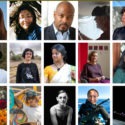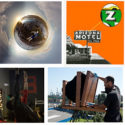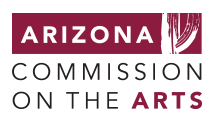Welcome to the second installment of Inside the App, a weekly five-part series designed to walk prospective applicants through the Artist Research and Development Grant application and outline some general principles of effective grant writing for artists.
What’s the Story
This week we’ll be looking at the heart of your grant application: the proposal narrative. But before we get into the How, let’s talk for a moment about the Why.
Question: Why write a grant application?
Answer: To get a grant.
Alright then, let’s move on!
Just kidding. There are actually other reasons, beyond the painfully obvious one, to write a grant. We won’t go into all of them here, but two are particularly pertinent to our discussion today on proposal narratives:
- Writing grants helps artists think more clearly about their work. (internal)
- Writing grants helps artists communicate more clearly about their work. (external)
“Every story I create, creates me. I write to create myself.”
Octavia E. Butler
Grant writing is storytelling. As such it is a creative activity, not only in the sense that it engages one’s creativity, but also in the sense that it generates new ideas, insights, and possibilities. An artist who thinks of grant writing solely as a means to secure funding may be missing out on a tremendous opportunity to refine, develop, and deepen their artistic vision.
“For me, writing is a way of thinking. Having to respond to a grant writing process is a way of beginning to work on the project.”
Geneva Foster Gluck
For 2015 ARDG recipient Geneva Foster Gluck the grant writing process is part of her creative process. As she writes a proposal narrative, the project she is proposing acquires greater depth and clarity, structure and meaning.
With our Why now thoroughly considered, let’s move on to the How.
Or more to the point, the Who, What, When, Where, and Why.
Your proposal narrative, above all else, should answer these five basic questions.
- Who are you?
- What do you intend to do?
- When will it happen?
- Where will it happen?
- Why are you doing it?
If you can answer those five questions clearly and concisely, you’re well on your way to an excellent proposal narrative. To complete the journey, you’ll need to address three more questions:
- Why you?
- Why now?
- Why should I care?
(These are not the actual questions asked in the ARDG application, but if you can answer these three questions well, your answers to the actual application questions will be easier to compose and much stronger.)
The Three Whys are much trickier than the basic Who, What, When, Where, and Why we began with. Keep the following writing fundamentals in mind as you develop your answers:
- Audience: Remember the research you did last week? This is where it pays off. You may not know who, specifically, will be reading your application, but you have a sense of what it is they are looking for in your proposal. Write to that.
- Purpose: Remember what I said earlier about the other reasons to write a grant? Forget it (for a moment). Your primary objective is still to get a grant and to do that you will need to persuade your audience (see above) that your project is worth funding. If something you’ve written isn’t serving that purpose, cut it or rework it so that it does.
- Tone: Understanding your audience and purpose should help you identify the proper tone, but fine-tuning will be required. Such qualities as confident, authoritative, or passionate can easily dip into arrogant, pedantic, or precious if not properly calibrated.
 Speaking of calibration, Carla Keaton, a recipient of a 2016 ARDG, applies an old carpenter’s adage to her process:
Speaking of calibration, Carla Keaton, a recipient of a 2016 ARDG, applies an old carpenter’s adage to her process:
“I review my work over and over again. I find it a good practice to measure twice and cut once. I also have another person review the directions and material for me to check to make sure that I haven’t missed anything.”
Carla Keaton
Revise, revise, revise. Complete a draft, step away from it, and return to it with fresh eyes. Allow yourself time to generate multiple drafts and to place drafts with trusted friends for review. The difference between a good application and a great application is usually the number of drafts that went into their creation.
In closing, a few qualities to aim for in your proposal narrative:
- Be clear: Provide the reader with concrete details and avoid jargon that may be unfamiliar to those who work outside your artistic discipline.
- Be concise: Get to the point and don’t bury the lede. Avoid getting lost in either the nuts-and-bolts minutiae of your project or the nebulous realm of the theory behind it.
- Be compelling: Guide the reader from one idea to the next. Avoid digressions and inessential details. Use your words to paint a vivid mental picture that the reviewer will want to see realized.
Your assignment this week:
Answer the questions Who, What, Where, When, and Why.
Answer the questions why you?, why now?, why should I care?
Write the first draft of your responses to questions (a), (b), (c), and (d) under “Proposal Narrative” in the Grant Proposal section of the grant guidelines.
Related


34 Arizona Artists Awarded Research & Development Grants
Awarded through a competitive application and review process, these $5,000 grants support Arizona artists as they work to advance their artistic practice, expand their creative horizons, and deepen the impact of their work.
Read more
30 Arizona artists awarded Research & Development Grants
The Arizona Commission on the Arts awards 2022 Research & Development (R&D) Grants to 30 Arizona artists to advance their artistic practice, expand their creative horizons, and deepen the impact of their work.
Read more
Arizona Commission on the Arts and Arizona Community Foundation Announce Partnership, Additional Investments in Arizona Artists
On September 18, 2018, The Arizona Community Foundation (ACF) and the Arizona Commission on the Arts announced a joint effort to support Arizona artists, including additional funding from the recently established Newton and Betty Rosenzweig Fund for the Arts, an endowment held at ACF.
Read more
Perspectives: Danielle Foushée
Perspectives is an on ongoing series of interviews and check-ins with recipients of our Artist Research and Development Grant (ARDG). Recently, we spoke with Phoenix-based public artist Danielle Foushée about "Invitation," a piece installed at the entrance to Tempe Beach Park in October 2017.
Read more








